|
October 2011
Photographers Resource -
Monthly
Edition 94 |
Autumn Colours
and Photography
|
|
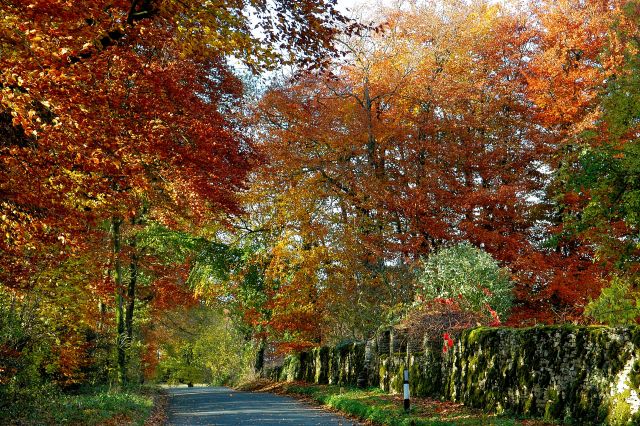 |
|
An Autumn Drive in the Cotswolds
 |
Image taken with Nikon D100, with
24-85mm lens @ 58mm, ISO 400, 1/160th, F6.3 |
|
|
|
In This Issue:-
It's now October and traditionally thought of
as our main autumn month, with leaves on the trees changing colour, nights
drawing in and becoming darker earlier and our wildlife changing with the summer
visitors on their way back to other parts of the world, the winter migrants
coming here and our native wildlife busy scurrying around foraging for food and
bedding ready for the coming winter months. At the end of the month we also have
to put our clocks back, signifying the end of our summer and the start of
winter. This month we are taking a look
at
Autumn Colours
 and our photographic feature looks at those filters suitable for taking vibrant,
colourful and well focused images.
Filters for autumn colours
and our photographic feature looks at those filters suitable for taking vibrant,
colourful and well focused images.
Filters for autumn colours
 looks at the different types of filters, some to assist some perhaps to enhance
the effects, we also look at where its needed as opposed to being able do this
in editing.
looks at the different types of filters, some to assist some perhaps to enhance
the effects, we also look at where its needed as opposed to being able do this
in editing. With the darker nights it's
also an opportunity to brush up on your night time photography skills ready for
Photographing fireworks
 at the end of the month and into November. If you can, take the opportunity to
visit the Blackpool Illuminations and experiment with different techniques both
handheld and using a tripod, using faster shutter speeds to stop movement or
even slower ones to enhance motion of moving lights and so on. If you can't get
to Blackpool then go more local using your local high street or a bridge over a
fast road capturing the car lights below. Within our
Photography
at the end of the month and into November. If you can, take the opportunity to
visit the Blackpool Illuminations and experiment with different techniques both
handheld and using a tripod, using faster shutter speeds to stop movement or
even slower ones to enhance motion of moving lights and so on. If you can't get
to Blackpool then go more local using your local high street or a bridge over a
fast road capturing the car lights below. Within our
Photography
 section we have numerous articles to help and advise you on how to go about this
low light level challenge, and in particular take a look at
Photographing carnivals with lights
section we have numerous articles to help and advise you on how to go about this
low light level challenge, and in particular take a look at
Photographing carnivals with lights
 and
Photographing Street scenes at night
and
Photographing Street scenes at night  but you may also find
Photographing fun fairs
but you may also find
Photographing fun fairs
 and
Photographing coloured lights in forest/woodland settings
and
Photographing coloured lights in forest/woodland settings  are also helpful.
are also helpful. |
|
Let's
explain how this newsletter and resource works
Each month we have a newsletter or
magazine and this comes out on or about the 1st of the month. The
newsletter links to a number of new articles, tables of information
and detailed location guides, amongst other things.
One of the most popular features is a
monthly diary covering interesting and unusual things on, around the UK,
in the two months ahead.
Everything that appears, or ever has,
is indexed in a number of ways, alphabetically, by topic, by
county, and often linked into sections. Many of the sections have their
own front doorways so people with specific interests have direct access
through these doors to their area of interest.
You can also get back to see every
newsletter, from the beginning, via our recent editions link.
All of our links are coded showing you
if it's an external link
 or one of our own pages and when it is, the type of page it is. You will
find a key to the most popular ones at the bottom of the contents panel
on the left and clicking on any of the symbols will bring up a full
list. Holding your mouse over one of these symbols tells you what it
means.
or one of our own pages and when it is, the type of page it is. You will
find a key to the most popular ones at the bottom of the contents panel
on the left and clicking on any of the symbols will bring up a full
list. Holding your mouse over one of these symbols tells you what it
means.
If this is your first visit,
click here
 to find out how you might best use this site to help you find what you
are looking for.
to find out how you might best use this site to help you find what you
are looking for.
|
|
|
|
|
Feature
Autumn Colours
I find this time of the year in the countryside
the most colourful. The leaves on the trees are turning into their magical
autumn colours of oranges, yellows, browns, gold's and reds mixed in with the
evergreens, but also the light levels are more subtle and when it filters
through the trees you can sit, contemplate and enjoy your surroundings. If it
has rained a little it can also smell fresh and clean. Of course with
photography we can't necessarily get over the smells and aromas of an autumn
day, but we can have colourful full depth visual images that can make use feel
good and inspire others to have a go. Whether you are able to get out into the
countryside, or visit an arboretum like the
National Arboretum
 near Tetbury in Gloucestershire, or whether you can only spare the time to get
to your local park capturing autumn colours is possible for everyone. We have a
whole section of this resource dedicated to
Autumn Colours.
near Tetbury in Gloucestershire, or whether you can only spare the time to get
to your local park capturing autumn colours is possible for everyone. We have a
whole section of this resource dedicated to
Autumn Colours.

The trees in our countryside take on a number
of different guises throughout the year as they go through the many stages of
their life. Many trees have been around for hundreds of years and they are still
being planted today to replace those that are cut down to provide material
comfort for ourselves, or under health and safety rules if they may be a danger
to human life. Like all living entities their main aim in their lifecycle is to
reproduce and try to take over the world, and to do this they start off the year
by producing buds and flowers that are then pollinated by the many insects and
birds that visit them for a food source, they then grow their green leaves which
provide them with a food source throughout the summer until at the end of summer
when the temperature drops this is their signal to stop feeding and to rest up
for winter, and this results first in our autumn colour spectacular and then the
golden carpets beneath them when the leaves drop off.
Autumn colours
- an introduction
 looks at this
in a little more detail and explains what is happening, how its triggered
and more. looks at this
in a little more detail and explains what is happening, how its triggered
and more.
go along and just point
and shoot and sort it out in editing afterwards, but isn't it
more rewarding to actually work out what techniques we could use to get stunning
images at source. That's just what this article takes a look at, such techniques
as
white balance  and
colour
management
and
colour
management
 to get the colours right or even intensify them,
Exposure
to get the colours right or even intensify them,
Exposure
 and using lenses correctly to get the right
Depth of Field,
and using lenses correctly to get the right
Depth of Field,
 lighting how the colours, leaves etc are lit using flash, aids and accessories
such as
Reflectors,
lighting how the colours, leaves etc are lit using flash, aids and accessories
such as
Reflectors,
 but also considering the angle of light and how we might paint with it.
Composition
but also considering the angle of light and how we might paint with it.
Composition
 is also looked at and consider other techniques for other subjects that might
also be in the image such as a body of water or reflections in puddles,
Photographing
Water
is also looked at and consider other techniques for other subjects that might
also be in the image such as a body of water or reflections in puddles,
Photographing
Water
 may help with this. How to go about using
Filters
may help with this. How to go about using
Filters
 and how they will help intensify the scene you are trying to portray and get the
viewers senses going, see the next feature for more on this.
and how they will help intensify the scene you are trying to portray and get the
viewers senses going, see the next feature for more on this.
|
|
|
Photographic Feature
Filters for Autumn Colours
There are many aids and accessories that you can
use to enhance your autumn images, some of which we have mentioned above. Here
we are going to concentrate on how we can go about using Filters either by
adding them to our DSLR lenses, or by using the pre-programmed types within the
software of our cameras. Using filters for a lot of photography isn't probably
one of the top accessories that jumps to mind, but especially for autumn colours
as many of us will assume with such vibrant colours on display and the softer
light that we get this time of year will allow us to get the right image without
the need, and anyway if it's not quite right we can always correct it in editing
afterwards, can't we!
Editing is a good tool to have available to help
out when we haven't quite got the results we intended, but one thing editing
can't do is correct anything that isn't there in the first place. So if we don't
capture the image right, editing will fail us.
|
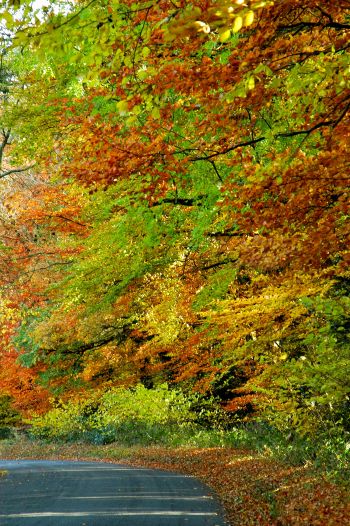 |
|
 The Changing Colours of Autumn
The Changing Colours of Autumn
|
|
|
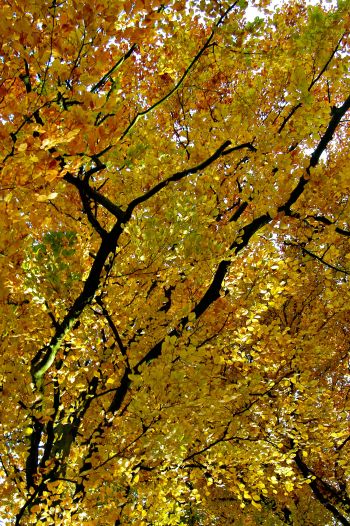 |
|
 The Golden Canopy
The Golden Canopy
|
|
There are many different types of filters. As I
mentioned above there are software filters within many of the digital cameras on
the market today, like being able to take black and white images, but why would
you want a black and white image of something so colourful. There are also a
vast number of filters that fit onto the lenses of DSLR cameras. Two particular
makes are Cokin Filters, who have two types a screw on version which can screw
onto the end of the lens and a square version that are fitted into a
Filter holder
 that is fitted onto the end of the lens. Then there are the more expensive
square Lee Filters which fits into a holder that attaches to the end of the
lens.
that is fitted onto the end of the lens. Then there are the more expensive
square Lee Filters which fits into a holder that attaches to the end of the
lens.
Probably the most commonly used filter is the
Protection filter,
 these can be screwed onto most lenses and provide a level of protection for the
lens and helps to keep the lens clean. The next most popular filters is the
Polariser,
these can be screwed onto most lenses and provide a level of protection for the
lens and helps to keep the lens clean. The next most popular filters is the
Polariser,
 they are very useful and can be used to reduce mist or haze, increase, reduce or
eliminate reflections, can make sky's bluer and white clouds show out, but best
of all for autumn colours than can saturate the colours and make them show
better. There are also filters that allow you to achieve longer exposures or for
enhancing colour as well as adding special effects.
Effect filters
they are very useful and can be used to reduce mist or haze, increase, reduce or
eliminate reflections, can make sky's bluer and white clouds show out, but best
of all for autumn colours than can saturate the colours and make them show
better. There are also filters that allow you to achieve longer exposures or for
enhancing colour as well as adding special effects.
Effect filters
 looks
at some of the special effects filters like adding stars, soft effects, netting and more. looks
at some of the special effects filters like adding stars, soft effects, netting and more.
We have specifically written an article looking at filters for autumn colour
photography to help you identify which might be best for the image you want.
Filters for autumn colours
 takes
a
look at the different types of filters, some to assist, some which will help to enhance
the effects, but we also look at and discuss where they may be needed as opposed to being able do this
in editing. Of course if you don't have filters already and with budgets are
tight there are other ways to get similar effects and
Filters - Other solutions takes
a
look at the different types of filters, some to assist, some which will help to enhance
the effects, but we also look at and discuss where they may be needed as opposed to being able do this
in editing. Of course if you don't have filters already and with budgets are
tight there are other ways to get similar effects and
Filters - Other solutions
 takes a look at these and their differences.
takes a look at these and their differences.
|
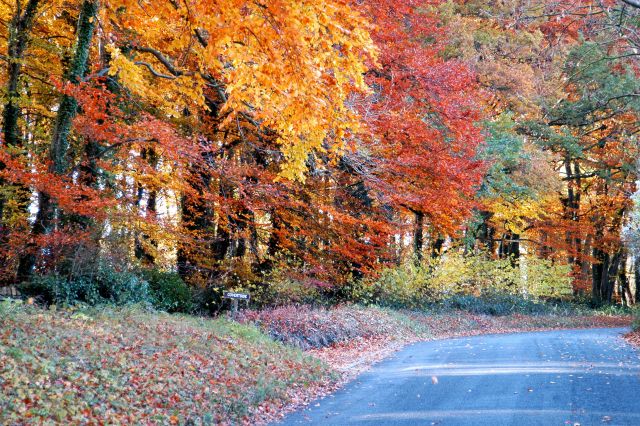 |
|
 The Different Colours of Autumn
The Different Colours of Autumn
|
For more on filters we have a
Filters Section
 as well as a
Further information page
as well as a
Further information page
 which gives links to other articles as well as links to filter manufacturers
etc.
which gives links to other articles as well as links to filter manufacturers
etc.
|
|
|
The Photographers Diary
The November diary is now in the 'next month' slot
with October moved to in the 'this month'. Both months have a lot of opportunities for
everyone. Some highlights that are of particular interest are:-
With October the nights are now starting to draw
in, autumn is upon us with many trees now turning their traditional autumnal
colours and at the end of the month the clocks GO BACK
one hour as we head into winter. This month is the last month with lots of
activities taking place around the country for us to occupy our weekends with
and at the end of the month there is the last major school holidays before the
Christmas break. I can't believe I just used the 'C' word, but hey I'm slow many
shops in our high streets have had their Christmas displays on show since the
beginning of September.
Many of the activities taking place this month
involve nature, in our woodlands such as the Seed Gathering Season a
festival organised by the Tree Council to inspire everyone to gather seeds,
fruits and nuts but also to plant new trees ready for the future. Staying with
the woods you also have National Badger Day on the 1st as well as the
start of
Red Squirrel
 Week, the 21st is National Apple Day and throughout October National
Trust properties put on apple and orchard events for visitors. And of course
October is the month when our trees and in particular woodlands change colour to
their autumnal colours of yellow, gold, red, browns and more. Exbury Gardens in
Hampshire starts their Festival of Autumn Colour on the 1st running right
through October until the 6th November, where they provide visitors with a
special autumn trail so that you can get to see the most of their maples,
dogwoods and azaleas in full autumn colour.
Week, the 21st is National Apple Day and throughout October National
Trust properties put on apple and orchard events for visitors. And of course
October is the month when our trees and in particular woodlands change colour to
their autumnal colours of yellow, gold, red, browns and more. Exbury Gardens in
Hampshire starts their Festival of Autumn Colour on the 1st running right
through October until the 6th November, where they provide visitors with a
special autumn trail so that you can get to see the most of their maples,
dogwoods and azaleas in full autumn colour. |
|
Illuminations are also a big part of the coming
three months, Blackpool Illuminations started their annual marathon and
continues until the beginning of next month. From the 7th to 29th October in
Pitlochry, Scotland there is the annual Enchanted Forest, a sound and
light show which attracts around 20,000 visitors each year to see the magical
light display in the Explorers Garden. The 15th is Marlborough Mop, in
Wiltshire, when the high street of Marlborough is taken over by a large
travelling fairground and in the evening is lit up to full glory. Also on the
15th is the Hastings Bonfire Night, in Sussex, it starts with a torchlit
procession along the sea front to the large bonfire and culminates in a firework
display. At the end of the month, on the 29th, the National Tramway Museum in
Derbyshire hosts an Halloween spectacular with illuminations, witches,
ghosts and trams in the dark.
|
There are still a number of country shows, game
and craft fairs taking place including the South of England Show and
Gatcombe Park Country and Craft Fair on the 1st and 2nd, East of England
Show on the 9th, and Countryside Live, at the Great Yorkshire
Showground in Harrogate Yorkshire on the 22nd and 23rd. Keeping with the country
theme there is also the British National Ploughing Championships on the
8th and 9th, this year being held near Bishops Lydeard in Somerset, the
Scottish Ploughing Championships on the 22nd and 23rd in Inverness-shire,
and the Robin Hood Pageant in Nottingham on the 29th and 30th,
a celebration of the legend
of Robin Hood over the weekend. With jousting, medieval games and horsemanship,
parades, falconry, living history encampment, and traditional period crafts from
the time.
The end of the month is Halloween and over the
last weekend there will be many local activities taking place, so don't forget
to check out your local area for something closer to home. |
|
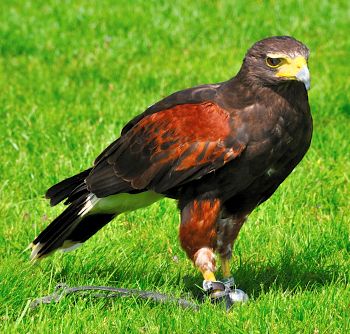 |
|
 Bird at a Country Fair
Bird at a Country Fair
|
|
One major event taking place at the end of the
month, which affects all of us is British Summer Time comes to an end on the
30th, when we all need to turn our CLOCKS BACK ONE HOUR,
and look forward to the coming winter months which will have loads more going on
than you think. So don't forget to reset yours!
|
|
|
Wildlife Photography In October
|
For the wildlife of the UK October and Autumn is
time when they are busy feeding themselves up and getting ready for the leaner
winter months, so our countryside is full of activity with the birds and mammals
foraging for food. One such forest and hillside dweller who is very active this
time of year is the largest of our native land animals the
Red
Deer.
 This month is their rutting period when males fight for domination and the right
to build a harem of females which he can mate with. Over the summer months the
males have been growing a completely new set of antlers, and it is these that
use in their displays and attacks of aggression on other males. Red Deer are particularly large in
number in Scotland, and in recent years the
BBC Autumnwatch
This month is their rutting period when males fight for domination and the right
to build a harem of females which he can mate with. Over the summer months the
males have been growing a completely new set of antlers, and it is these that
use in their displays and attacks of aggression on other males. Red Deer are particularly large in
number in Scotland, and in recent years the
BBC Autumnwatch
 programme has followed a group of males on the Isle of Rum. Although the
majority of the Red Deer
programme has followed a group of males on the Isle of Rum. Although the
majority of the Red Deer
|
|
populations within the UK are wild, and if you
should find some and be able to get close enough, which is not easy, there are some
populations within England that are more used to us being around. In recent
newspaper reports some of the Red Deer males have been causing a few problems,
like those in Richmond Park in London, when us humans have got in the way or a
little too close. At this time of year it is wise to give them a wide berth if
you happen to be in an area where they are more used to us. Within England they
can be found in some our
National Parks
 such as
Dartmoor, such as
Dartmoor, Exmoor and the New Forest, but take a look at our
Deer Section Exmoor and the New Forest, but take a look at our
Deer Section
 for places you might want to try. This time of year is also the rutting
season for
Fallow Deer,
for places you might want to try. This time of year is also the rutting
season for
Fallow Deer,
 a much smaller breed, but the stags are still
just as impressive with their large antlers and light spotty backs. a much smaller breed, but the stags are still
just as impressive with their large antlers and light spotty backs.
Autumn is now in full swing and a look in any
tree lined street, out in the countryside, amongst our woodlands and arboretum
you will see a wealth of colours from yellows, gold's, oranges, reds and of
course some greens. Just like the New England Region of the USA our English
Autumn Colours
 is probably when of our best photographic highlights of the year. It is all
around us so we don't necessarily have to go a long way to capture some great
images, just outside our back door. This years BBC Autumnwatch programme is
coming from
Westonbirt Arboretum,
is probably when of our best photographic highlights of the year. It is all
around us so we don't necessarily have to go a long way to capture some great
images, just outside our back door. This years BBC Autumnwatch programme is
coming from
Westonbirt Arboretum,
 near Tetbury in Gloucestershire, probably one of the best locations in
England to get a full display of all the autumn colours in one space, with its
3,000 maples and acers already in full autumnal spread. If you want autumn
colours and water then you couldn't go wrong with a visit to
Stourhead,
near Tetbury in Gloucestershire, probably one of the best locations in
England to get a full display of all the autumn colours in one space, with its
3,000 maples and acers already in full autumnal spread. If you want autumn
colours and water then you couldn't go wrong with a visit to
Stourhead,
 in Wiltshire, with its large lake, waterside temples and surrounded by vast
numbers of trees it is magical, and if you are lucky to get there on a sunny day
then the reflections in the water are second to none. Of course there are lots
Woodlands and
Forests
in Wiltshire, with its large lake, waterside temples and surrounded by vast
numbers of trees it is magical, and if you are lucky to get there on a sunny day
then the reflections in the water are second to none. Of course there are lots
Woodlands and
Forests
 throughout the UK just waiting for you to explore and immerse yourself in.
throughout the UK just waiting for you to explore and immerse yourself in.
route in old fallen trees, in tree bark and other such moist places and
getting ready to disperse their seeds. The Red top with white
spots of the Fly Agaric which can be found around birch or spruce
tress are attractive to photograph, but beware DO NO TOUCH as they are
poisonous. Or watch out for the black and white of the Shaggy Inkcap appearing
in lawns overnight.
If you are lucky enough to live the in right country
location you may also see
Redwings
 who have migrated here from Scandinavia, Russia and Iceland to enjoy our
warmer winter. Also look out for the
FieldFare
who have migrated here from Scandinavia, Russia and Iceland to enjoy our
warmer winter. Also look out for the
FieldFare
 and other winter thrushes as they arrive from their breeding grounds and feast
on berries in the hedgerow, and fallen fruits such as apples. Migration for most birds,
that have been here through the summer months, is coming to an end, on the other hand the big migration of
Winter Migrants
and other winter thrushes as they arrive from their breeding grounds and feast
on berries in the hedgerow, and fallen fruits such as apples. Migration for most birds,
that have been here through the summer months, is coming to an end, on the other hand the big migration of
Winter Migrants
 such as swans and geese that visit us during
the winter months is underway with
Bewick's Swans such as swans and geese that visit us during
the winter months is underway with
Bewick's Swans
 arriving at
Slimbridge arriving at
Slimbridge
 in Gloucestershire and
Arundel in Gloucestershire and
Arundel
 in Sussex, while the
Whooper Swans in Sussex, while the
Whooper Swans
 and
Barnacle Geese and
Barnacle Geese
 flock into
Caerlaverock flock into
Caerlaverock
 in Scotland,
Pink Footed Geese in Scotland,
Pink Footed Geese
 arrive at
Martin Mere arrive at
Martin Mere
 in Lancashire and making their winter home on
Strangford Loch
in Lancashire and making their winter home on
Strangford Loch
 in Northern Ireland are the
Brent Geese.
in Northern Ireland are the
Brent Geese.
 Our Estuaries are also
filling up with more waders and wildfowl, such as the Merganser which can be
seen along the east and south
coast as well as in the Bristol Channel. Starlings will be gathering in large groups
on treetops and telephone wires before joining up with other large groups in
large roosts. Some of the best starling displays are seen at
dusk as they come in to roost for the night. Our Estuaries are also
filling up with more waders and wildfowl, such as the Merganser which can be
seen along the east and south
coast as well as in the Bristol Channel. Starlings will be gathering in large groups
on treetops and telephone wires before joining up with other large groups in
large roosts. Some of the best starling displays are seen at
dusk as they come in to roost for the night.
Take a look at
Wildlife Photography in October
 to find out what else is going on in the wildlife world this month.
to find out what else is going on in the wildlife world this month. |
|
|
Summary of Articles Included
In This Issue |
|
Autumn colours introduction

Finding autumn
colour locations

Photographing autumn
colours

Filters for autumn colours

Wildlife Photography in October

Winter Migrants

Red Squirrel

Red
Deer

Fallow Deer

Squirrels

Red squirrels

Redwings

FieldFare

Bewick's Swans

Whooper Swans

Barnacle Geese

Pink Footed Geese

Brent Geese

Photographing
Water

Photographing fireworks

White Balance 
Colour Management

Depth of Field

Reflectors

Composition

Polarisers

Protection Filters

Filter holders
 |
|
Lists Included In This Issue |
|
National Parks

Autumn Colours in England

Autumn Colours in Wales

Autumn Colours in Scotland

Autumn Colours in Northern Ireland

|
|
Locations Guides Included In This
Issue |
|
Arundel WWT, Sussex,

Caerlaverock, Scotland

Dartmoor,
Devon
Formby Point, Lancashire

Kielder Forest,
Northumberland

Martin Mere, Lancashire

Slimbridge WWT, Gloucestershire

Stourhead, Wiltshire

Strangford Loch, Northern Ireland

Westonbirt Arboretum,
Tetbury, Gloucestershire
 |